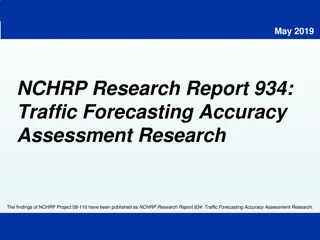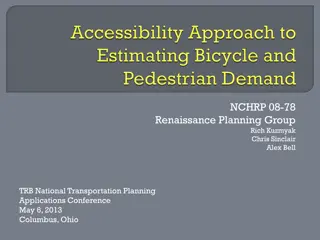Importance of Access Management near Interchanges
Access management near interchanges is crucial for ensuring efficient traffic flow, minimizing conflicts, and enhancing the overall performance of crossroads and highways. By strategically controlling access points, separating turning movements, and optimizing spacing, the goal is to improve safety, mobility, and access for all road users. Various strategies, such as limiting left turns and improving intersection design, can help manage vehicle conflicts and enhance the functionality of arterial crossroads at interchanges.
Download Presentation

Please find below an Image/Link to download the presentation.
The content on the website is provided AS IS for your information and personal use only. It may not be sold, licensed, or shared on other websites without obtaining consent from the author. Download presentation by click this link. If you encounter any issues during the download, it is possible that the publisher has removed the file from their server.
E N D
Presentation Transcript
NCHRP 07-23 Access Management in the Vicinity of Interchanges Module #1: Importance of Access Management in Vicinity of Interchanges 1
Why Is Access Management Important near Interchanges? Purpose of the interchange is to move traffic efficiently to and from the highway. Business activity often created in the area can cause problems and diminish the performance of the crossroad. 2
Interchange and Crossroad Purposes Function as an intersection with a major highway. Provide a link to long distance regional travel for both people and goods. Maintain a connection between both sides of the highway at intervals of one to two miles. Serve as a traveler destination area for restaurants, retail goods, hotels, and vehicle services. Serve as a destination for the local community. Enhance regional or global mobility. Become an employment center. Generate revenue for local government based on property and retail taxes. 3
Principle of Access Management Control of the location and design of all connection points to a roadway by limiting conflicts between through vehicles and vehicles executing access maneuvers, while also considering safe passage for other users (i.e., pedestrians, bicycles, transit). 4
Access Management Strategies Reduce speed differential at access connections. Separate turning movements from main travel lanes. Provide a limited number of access connections (fewer access points translates into fewer conflict points). Optimize spacing between driveways resulting in fewer conflicts per mile. Provide longer and more uniform spacing between full movement intersections. 5
Potential Access Management Strategies for Arterial Crossroads at Interchanges Limit the locations and number of left turns. Design each left-turn location to minimize speed differential impacts between the turning and the following vehicles. Limit the frequency of marginal access points and their related maneuvers. Carefully plan the location of public intersections to achieve uniform and longer spacing. Improve the accessibility of the secondary street system to provide good property access and convenient circulation of traffic to the arterial intersections. 6
Manage Vehicle Conflicts Occur where the travel paths of road users conflict with other road users. As the frequency of conflict points increases, crashes can also be expected to increase. 7
Define Vicinity Area where development has occurred in response to the presence of the interchange 8
Critical Documents FHWA Interstate System and Access Information Guide (2010) AASHTO A Policy on Geometric Design of Highways and Streets (2018) TRB Access Management Manual (2003 with update scheduled for fall of 2014) TRB Access Management Application Guidelines (scheduled for fall release of 2014) Individual State Highway and/or Access Manuals 9
Goal of Workshop Material Explore access management strategies at crossroads at interchanges and better understand the impact of changing the influential strategies. 10
End of Module #1 Discuss common challenges and typical treatments considered regional 11

















